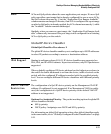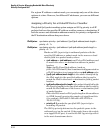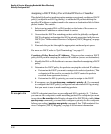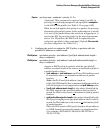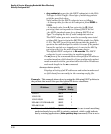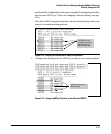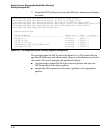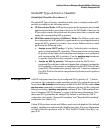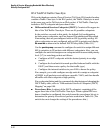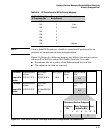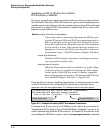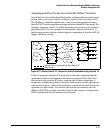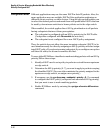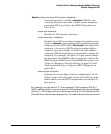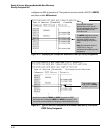
Quality of Service: Managing Bandwidth More Effectively
Globally-Configured QoS
Global IP Type-of-Service Classifier
Global QoS Classifier Precedence: 3
The global IP Type-of-Service classifier enables you to classify and mark IP
packets according to the following modes:
■ IP-Precedence Mode: All IP packets generated by upstream devices and
applications include a precedence bit set in the ToS/Traffic Class byte. In
IP-precedence mode, the switch uses the precedence bits to compute and
assign the corresponding 802.1p priority.
■ IP Differentiated Services (Diffserv) Mode: The Diffserv mode uses
the codepoints set in IP packets by upstream devices and applications to
assign an 802.1p priority to packets. You can use Diffserv mode to mark
packets in the following ways:
• Assign a new DSCP policy: A “policy” includes both a codepoint
and a corresponding 802.1p priority. This option selects an incoming
IP packet on the basis of its codepoint and assigns a new codepoint
and corresponding 802.1p priority. (Use the qos dscp-map command
to specify a priority for any codepoint—page 6-88.)
• Assign an 802.1p priority: This option reads the DSCP of an
incoming IP packet and, without changing this codepoint, assigns the
802.1p priority to the packet, as configured in the DSCP Policy Table
(page 6-88). This means that a priority value of 0 - 7 must be configured
for a DSCP before the switch can perform a QoS match on the packet’s
DSCP bits.
Prerequisite A DSCP codepoint must have a preconfigured 802.1p priority (0 - 7) before
you can use the codepoint to mark matching packets. If a codepoint you want
to use shows No-override in the Priority column of the DSCP Policy table (show
qos dscp-map command), you must first configure a priority for the codepoint
before proceeding (qos dscp-map priority command). See “Differentiated Ser-
vices Codepoint (DSCP) Mapping” on page 6-88 for more information. Note
that some 802.1p priorities are assigned by default to well-known DSCP
codepoints, such as the “Assured Forwarding” and “Expedited Forwarding”
codepoints (see Table 6-11).
Unless IP-Precedence mode and Diffserv mode are both disabled (the default
setting), enabling one automatically disables the other. For more information
on Type-of-Service operation, refer to “IPv4 ToS/IPv6 Traffic Class Byte” on
page 6-42.
6-41



